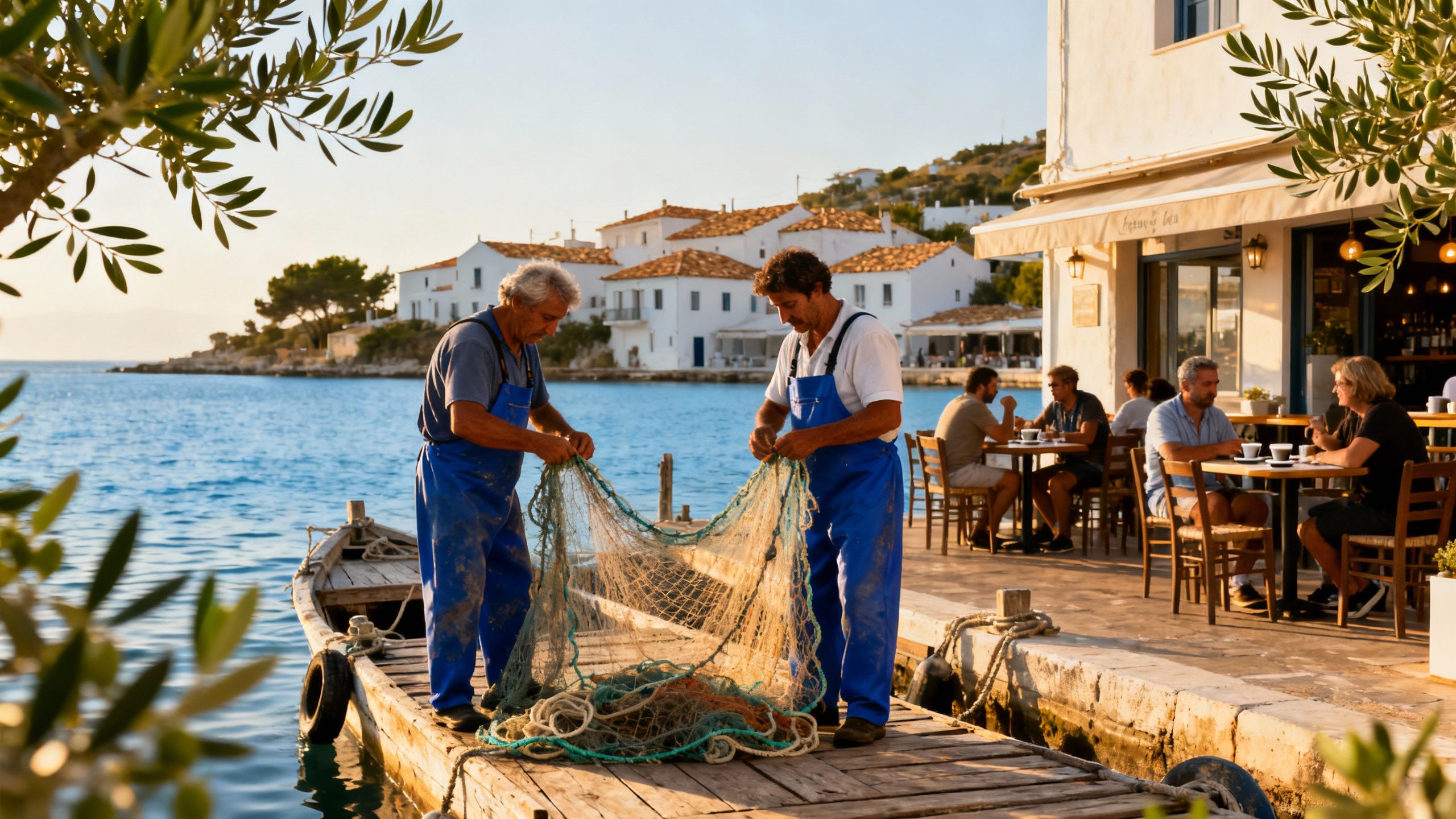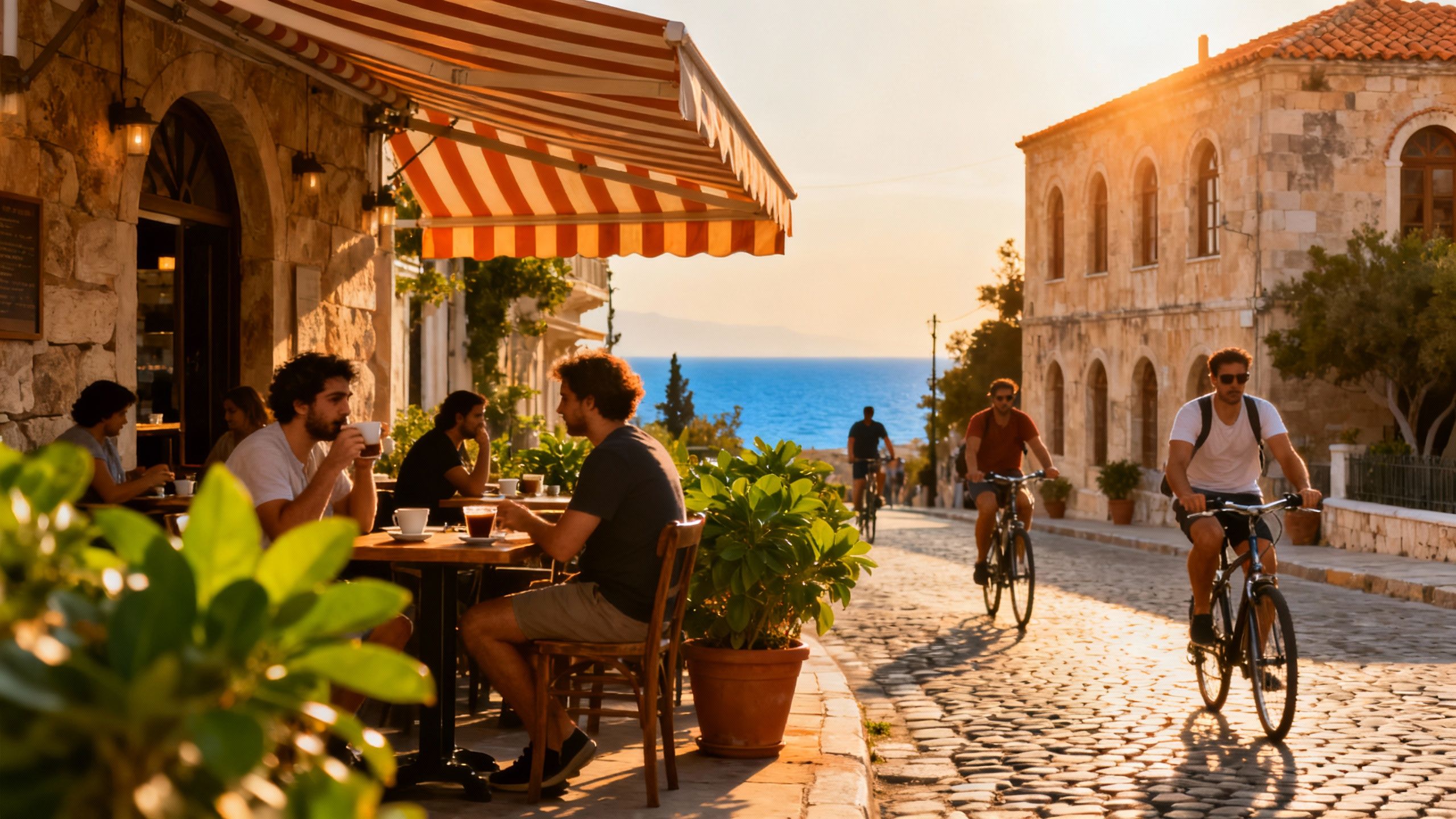Where France’s Green Grid Meets Everyday Life
How regionally clustered renewables, municipal incentives and French daily rhythms reshape property choices—practical steps and insider myths for eco‑minded buyers.
Imagine waking to the smell of boulangerie warmth drifting from a corner shop in Aix‑en‑Provence or stepping out onto a terrace in the Loire valley where vine leaves shimmer with morning dew. In France, rhythm is seasonal — market mornings, long lunches, and evenings that unfurl in public squares — and that rhythm shapes how houses are used, renovated and valued. For international buyers drawn to renewable energy and green infrastructure, France offers a patchwork of places where wind farms, solar valleys and eco‑villages meet centuries‑old stone and timber homes. According to recent market analysis, regional property markets are more nuanced than the headlines suggest, and green infrastructure is quietly redirecting lifestyle decisions and long‑term value.
Living the French green life: daily rhythms and places

To live in France is to live with seasons; winter light that makes stone walls sing, and summers that spill life outdoors. Small towns — think Sarlat in Dordogne, Vannes in Brittany or the hilltop villages around Millau — offer market squares, weekly food rhythms and a community pace that supports gardens, solar roofs and local food systems. Larger cities like Nantes, Grenoble and Montpellier pair cultural life with strong local sustainability initiatives, while coastal places such as Biarritz or Île de Ré marry beach life with renewable energy projects that influence planning and new‑build standards. Demographic and regional statistics from INSEE show how population flows and local economies shape both demand and the feasibility of green retrofits.
Nantes & the Loire: lively markets, bike lanes and green momentum
Picture cobbled streets in the Île de Nantes, cafés spilling onto cycle paths and converted warehouses where solar canopies shade public benches. Nantes has deliberately fused cultural life with low‑carbon planning, making it attractive to buyers who want walkable neighborhoods and easy retrofitting opportunities. For families or remote workers, the city’s blend of green space and creative industry feels like a practical version of the Provençal dream — less postcard, more everyday enchantment. That lived experience matters when choosing a property: proximity to amenities, access to public transport and municipal incentives often outweigh initial purchase price for long‑term lifestyle value.
Food, terroir and slow mornings: life in smaller towns
In towns along the Loire you’ll find morning markets where produce still arrives from fields within an hour’s drive, cafés where the barista knows your order and local craftsmen restoring heritage beams with chestnut and lime plaster. These micro‑regions excel for buyers seeking a restorative daily life tied to landscape — and for properties that lend themselves to passive heating, thick stone walls and small‑scale solar or heat‑pump retrofits. Seasonal festivals, from harvest fêtes to winter illuminations, anchor social life and create a sense of belonging that often surprises newcomers. For the eco‑minded buyer, these places combine low‑impact living with an abundance of lifestyle texture.
- Market mornings at Marché des Lices (Rennes); bikeable promenades in Nantes; oyster lunches on Île de Ré; vineyard walks near Saumur; artisanal cheese stalls in Lyon’s markets.
Making the move: practical choices that preserve lifestyle

Dreams meet reality when you step from market square into a property listing. Regional price trends vary widely: coastal and Parisian markets remain headline‑dominant, but interior regions can offer more space and stronger opportunities for green upgrades. Notaires de France provides current price indices that help you spot where your budget buys land for a garden, solar orientation for panels, or room for a recharge hub for electric vehicles. Crystallizing lifestyle priorities early — whether that’s a south‑facing terrace for winter sun or proximity to a community heat network — makes every viewing more purposeful and prevents costly compromises.
Property styles & green retrofit potential
Traditional stone cottages and townhouses hold character but also certain energy realities: thick walls that retain heat, or single‑glazed sash windows that need sympathetic upgrade. Newer passive‑design projects around Grenoble and Bordeaux show how renewable infrastructure (district heating, rooftop solar cooperatives) can transform running costs and comfort. ADEME’s guidance on retrofits highlights where heat pumps, insulation and ventilation deliver the biggest lifestyle dividends — not just lower bills but quieter, healthier homes. When you love slow mornings and open kitchens, these technical choices become matters of daily comfort, not abstract numbers.
Working with local experts who understand both place and permits
- A local agency with green expertise helps translate lifestyle wishes into feasible property choices. They spot passive solar orientation, advise on permitted renewable installations, and connect you with trusted local artisans for lime renders or reclaimed timber. They also navigate municipal planning quirks that determine whether you can add PV, expand a terrace, or install a heat pump — small permissions that shape daily life. Service‑public guidance on planning documents matters here, but the local agent is the one who knows which mayor will say yes.
- 1. Prioritize south/east orientation for winter sun. 2. Check roof condition for solar; replace tiles before panels. 3. Ask about local district heating and EV charging plans. 4. Budget for sympathetic insulation rather than cheap quick fixes.
Insider knowledge: myths, red flags and surprising opportunities
Three persistent myths trip up international buyers: that coastal equals value, that historic equals impossible to retrofit, and that green homes must be expensive. In reality, inland market pockets with active renewable projects and municipal incentives often offer better long‑term lifestyle value than crowded coastlines. The national electricity operator and ministry data show where grid upgrades and local renewables are concentrated, and those locations often signal future investment in local services and transport. Spotting neighbor investments — a new community solar field or a planned bike route — can be the quiet signal that a place is moving towards sustainable livability.
Cultural integration, language and the social scene
Learning a few local rhythms — market times, café etiquette, the short pause before small talk — opens doors faster than any contract clause. Join a chantier participatif restoring a barn, volunteer at a market stall, or spend Saturdays at local football or pétanque matches to meet neighbours; these practices translate into practical help during renovations and a friendlier route through local bureaucracy. Many expats we meet say the social capital gained from small investments of time made their homes feel rooted within months, not years.
Long‑term lifestyle & practical considerations
- Think beyond purchase: long‑term maintenance of heritage materials; local waste and composting services; seasonal access on rural lanes; and neighbor expectations around garden upkeep.
- 1. Inspect roof and insulation with a green lens. 2. Confirm municipal rules for renewable installations. 3. Meet local artisans before bidding. 4. Factor winter heating and summer shading into costs.
By the time you sign, you should be able to picture a morning routine: where you’ll buy bread, which bench in the park you’ll claim for reading, how the light moves through your kitchen by month. These sensory certainties — more than a spreadsheet — are what make a house feel like home. Work with an agent who treats lifestyle as an infrastructure issue, and you’ll find a property that gives you both daily delight and the capacity to steward the landscape that holds it.
Danish relocation specialist who moved from Copenhagen to the Algarve; supports families with seamless transitions, local partnerships, and mindful purchases.


